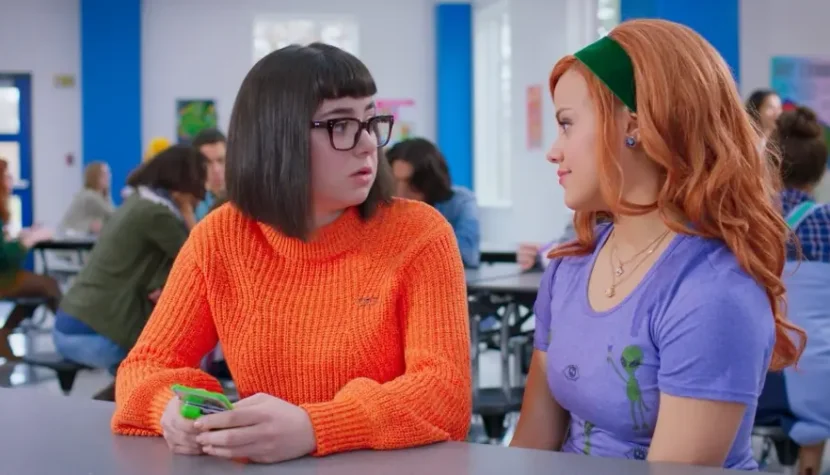DAPHNE & VELMA. Scooby-Doo without Scooby

I’m always into anything related to Scooby-Doo. Always. Aside from the original series and the excellent “Scooby-Doo! Mystery Incorporated” from 2010, it’s almost always a disappointment, but I can’t resist checking out every new iteration of the story that first sparked my fascination with horror cinema. So I approached the spin-off with Daphne Blake and Velma Dinkley in the lead without any negativity, despite most fans already tearing the trailer apart.
Many fans even took issue with the casting choices. While Sarah Gilman as the smart, modest Velma fits the criteria of thirty-somethings guarding the faithfulness to the original, Sarah Jeffery found herself under fire. She doesn’t lack experience, especially in thrillers—she appeared in “Wayward Pines” and the final season of “The X-Files“. So what are the complaints? Not the right waist, not the right chin, not the right weight, and so on. Of course, these criticisms mainly come from men, and of course, they can be placed alongside the outrage over Heath Ledger being cast as the Joker or the anger fans felt when Daniel Craig became the new face of James Bond.

Daphne’s transformation is actually one of the best elements of Suzi Yoonessi’s film. She’s typically portrayed as a not-too-bright fashion enthusiast, a kidnapping victim, and the owner of a bottomless handbag. Here, her clumsiness is blamed on an extremely overprotective father, and she’s quickly freed from the chains of this stereotype. Middle-aged men who once sighed over her may not find their old flame in this version, but instead, we get a character you can show your daughters without worrying they’ll adopt behaviors you wouldn’t want them to. It’s worth noting that “Daphne & Velma” is a movie for teenagers (and probably younger ones), and in that context, it works quite well.
The action takes place in an alternate reality or near future where technology is slightly more advanced—phones are transparent, social media sorts out the cool kids from the uncool, T-shirt colors can be changed via app, and thrown balls leave a strange, rainbow trail. The creation of this technologically advanced world was done on a low budget, which is quite evident. The production feels more like an episode of “Goosebumps” or “Eerie, Indiana” than a cinematic film, but first, it was made for the video market, and second, the vibe of ’90s teen horror shows helps gloss over all the narrative absurdities.
The plot itself is quite derivative. A small community subjected to mind control is an idea we’ve seen before, for example, in “The Stepford Wives”, and in the context of high schoolers, it was done about 20 years ago in “Disturbing Behavior”. There’s no intriguing mystery, surprising twists, or tension that grabs your attention. The story drifts from start to finish on a wave of predictability, yet it somehow avoids being irritatingly banal. At least, if you’re not someone fixated on the 1969 versions of these characters when they first debuted on screen. The film clearly nods to those years in its visual style—the entire setting resembles a hyper-psychedelic version of the ’60s, full of flowers and colors.

Yoonessi isn’t oblivious, as some outraged fans of the ‘meddling kids’ would like to believe. She winks at the audience a few times, referencing the vast Scooby-Doo universe. We get the standard chase scene where Velma loses her glasses, the group peeking around a corner in a completely conspicuous way, and even a scene in total darkness where only the characters’ eerily white eyes are visible.
I didn’t have high expectations and wasn’t assuming total failure, but I must admit I was gearing up to write a negative review. “Daphne & Velma” turned out to be a digestible effort and probably the best live-action take on these two characters so far. It’s not a film made for adults, and maybe that’s a good thing. I wouldn’t mind a movie adaptation of the currently-published “Scooby Apocalypse” comic series, where the “Mystery Machine” crew is treated in an exceptionally dark way, but sometimes it’s better to pass on an old passion to a new generation rather than keeping it chained to nostalgia.

